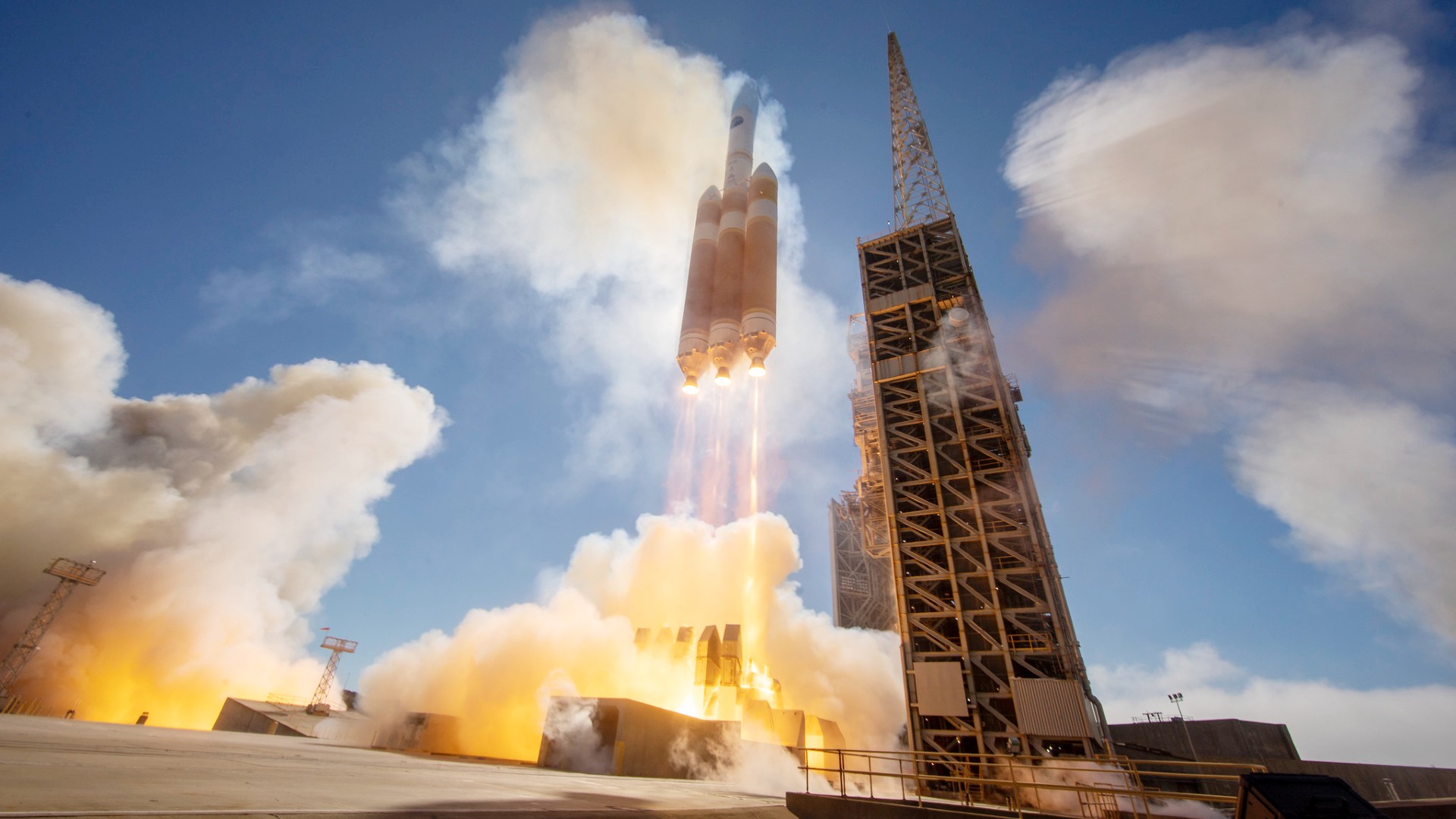United Launch Alliance's (ULA) powerful Delta IV Heavy rocket will fly for the second-to-last time early Thursday morning (June 22), and you can watch the action live.
The Delta IV Heavy is scheduled to lift off from Florida's Cape Canaveral Space Force Station on Thursday at 3:25 a.m. EDT (0725 GMT), on a mission for the U.S. National Reconnaissance Office (NRO) called NROL-68. The original target date was Wednesday (June 21), but a problem with a ground-system valve forced a one-day delay.
You can watch the launch live here at Space.com, courtesy of ULA, or directly via the company.
Related: Facts about the Delta IV Heavy

We know very little about the satellite going up on NROL-68. That's no surprise, given that it's an NRO payload; the agency operates the United States' fleet of spy satellites, whose capabilities and activities tend to be classified.
The NROL-68 mission patch — which features a baby dragon, its mother and the moon — offers a few clues, scant though they are.
"The baby dragon illustrates the birth of a new satellite system, while the moon with the mother dragon silhouette represent protection of the Five Eyes community, the nation and its allies," NRO officials wrote in a brief mission description. (Five Eyes is an alliance involving the intelligence communities of the United States, United Kingdom, Australia, Canada and New Zealand.)
"The passage along the bottom, Nusquam Celare, is Latin for 'Nowhere to Hide,'" NRO officials added. "The baby dragon may be science fiction, but NROL-68's impact on national security is real!"
NROL-68 will be ULA's first mission of 2023 and the 15th Delta IV Heavy launch overall.
The burly rocket stands 235 feet (71.6 meters) tall and generates 2.1 million pounds of thrust at liftoff. That's a lot, but it's far from the record. For example, NASA's Space Launch System rocket, which debuted on the successful Artemis 1 moon mission last year, produces 8.8 million pounds of thrust.
And SpaceX's giant Starship vehicle — the largest and most powerful rocket ever built — produces about 16.7 million pounds of thrust. But Starship has yet to fly a successful mission; it suffered a few problems during its lone flight to date, an April 20 test launch, and SpaceX ordered the vehicle's destruction high over the Gulf of Mexico.
ULA is phasing out both the Delta IV Heavy and its workhorse Atlas V rocket in favor of the new Vulcan Centaur, which is slated to debut later this year. Whereas the Delta IV Heavy has just one more mission to go after Thursday, however, the Atlas V will keep flying for years to come. ULA has booked missions on the veteran rocket through 2029, mostly to build out Amazon's Project Kuiper internet constellation and send Boeing's Starliner astronaut taxi to the International Space Station.
Editor's note: This story was updated at 3:15 a.m. ET on June 21 with news of a one-day launch delay, to early on the morning of June 22.







